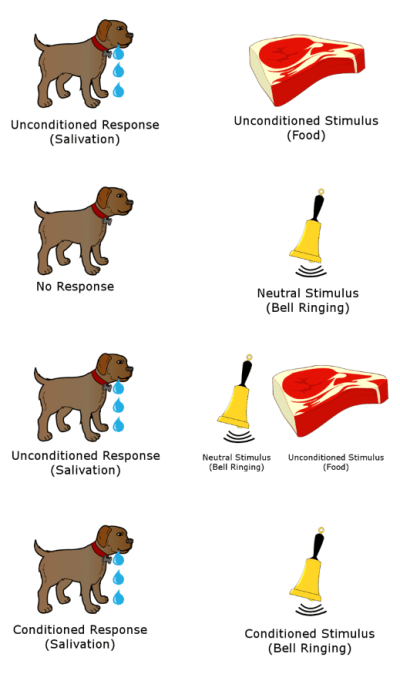
Let’s be clear: brand building IS a long-term strategy, requiring you to think in terms of years not months.
Even if a campaign delivers in the short term, the vast majority of benefits will still accrue over the long term.
And yet… there have been branding campaigns that drove big results within months of launching. Examples consist of:
- The Marlboro Man Campaign which exploded sales within a matter of months.
- Canadian Club’s fantastic Damn Right Your Dad Drank It campaign (courtesy of Energy BBDO), which reversed a 16-year sales decline within the first month of launching.
- And most impressively, Theodore MacManus’s single ad, ran only once, that reversed Cadillac’s sales slump back in 1915.
So you gotta wonder: is it possible to replicate those kinds of results? And if so, how?
What are the “cheat codes” that Leo Burnett and Energy BBDO and Theodore MacManus used to accelerate their branding results?
Why Branding Takes Time
Before you can accelerate a process, you have to understand why it’s slow in the first place.
 What, in fact, takes so long to deliver results from branding campaigns?
What, in fact, takes so long to deliver results from branding campaigns?
Answer: creating associative memories through ads takes lots of repetition over an extended timeframe.
Pavlov had to ring that bell over many, many meals to create an associative memory in his dogs.
And he was actually physically rewarding the dogs each time.
I mean, it’s not like we can copy Pavlov and give the audience $5 or a Snickers bar every time your ad plays. So just think how many times you have to run your ads for the desired associations to sink in.
Now, if that’s what takes time, our goal is to figure out a way to cheat or go around that process for faster results.
The Importance of Cultural Imprinting
The advertising theory of cultural imprinting was proposed by Kevin Simler, and you can read his long-form explanation of it here.
But here’s the quick and dirty summary:
Have you ever noticed how everyone seems to believe that advertising works on other people, but not them?
 Psychologists even have a term for it: The Third Person Effect.
Psychologists even have a term for it: The Third Person Effect.
Any given individual feels like they “know better” than to be fooled by fancy ads aimed at associating, say, Under Armour with athletic excellence.
But those individuals also believe that everyone else makes that association.
And they believe that precisely because they know that everyone else has also seen those ads, just like they have.
Therefore they can — and will — signal their serious athletic chops (or aspirations) by wearing Under Armour apparel, despite their personal skepticism of said associations.
That, according to Simler, is one way that ads achieve their persuasion. To quote him directly:
“Cultural imprinting is the mechanism whereby an ad, rather than trying to change our minds individually, instead changes the landscape of cultural meanings — which in turn changes how we are perceived by others when we use a product.”
The Speed of Cultural Imprinting
The beauty of cultural imprinting is its speed.
It’s much faster for me to convince you that other people already believe X about brand Y than to change your personal perceptions and associations around brand Y.
Why? Because most people conform to the social expectations of those around them.
Not you, of course; you’re different.
But most other people readily conform to group expectations. If you don’t believe that, just watch this Candid Camera clip:
Therefore, if I can communicate to a large part of the buying public the notion that everyone else associates brand X with quality Y, then I can change purchasing behavior very quickly.
So when Leo Burnet launched his Marlboro Man campaign, he didn’t have to wait to create associations in individual smokers’ minds.
He only had to make it clear to smokers that the public at large considered Marlboro to be a manly-man’s cigarette.
In other words, that the popular culture had accepted Marlboro as a man’s cigarette.
That’s how he boosted sales within a month.
Speed is the upside to embracing the theory of cultural imprinting.
The Need for Conspicuous, Public Advertising
If speed is the upside to cultural imprinting, the requirement for true Mass Media is the downside.
To quote Simler again:
“…cultural imprinting relies on the principle of common knowledge. For a fact to be common knowledge among a group, it’s not enough for everyone to know it. Everyone must also know that everyone else knows it — and know that they know that they know it…”
In other words, digital advertising won’t work for this.
About the only digital “advertisement” that one can assume everyone else has seen involves a Nigerian Prince.
On the other hand, one can be confident that most people will have seen a highly popular Super Bowl ad.
The same thing is true for high-impact billboards that end up blanketing your hometown.
For cultural imprinting to work, you have to hijack the popular culture at large, not just your target market.
And only old-school mass media has the power to do that.
But if your ad campaign manages that trick, you can very quickly gain Fame for your brand.
Cultural Imprinting and Your Brand Growth
So the secret to explosive brand growth is fairly simple:
Launch a mass media campaign that makes use of cultural imprinting.
Unfortunately, simple is not easy. If it were easy, everyone would do it.
The only easy way I know of is to hire an expert who knows how to craft an ad campaign designed to take advantage of this form of persuasion.
The hard way is to learn how to manipulate pop culture semiotics via high-impact ads yourself.
Or, you could patiently wait for ads designed around classical conditioning to do their work over time.
The choice is yours.
- Are You Paying for Too Much for the Wrong Keywords? - July 15, 2024
- Dominate Your Market Like Rolex — 4 Powerful Branding Lessons - July 3, 2024
- Military-Grade Persuasion for Your Branding - June 25, 2024
